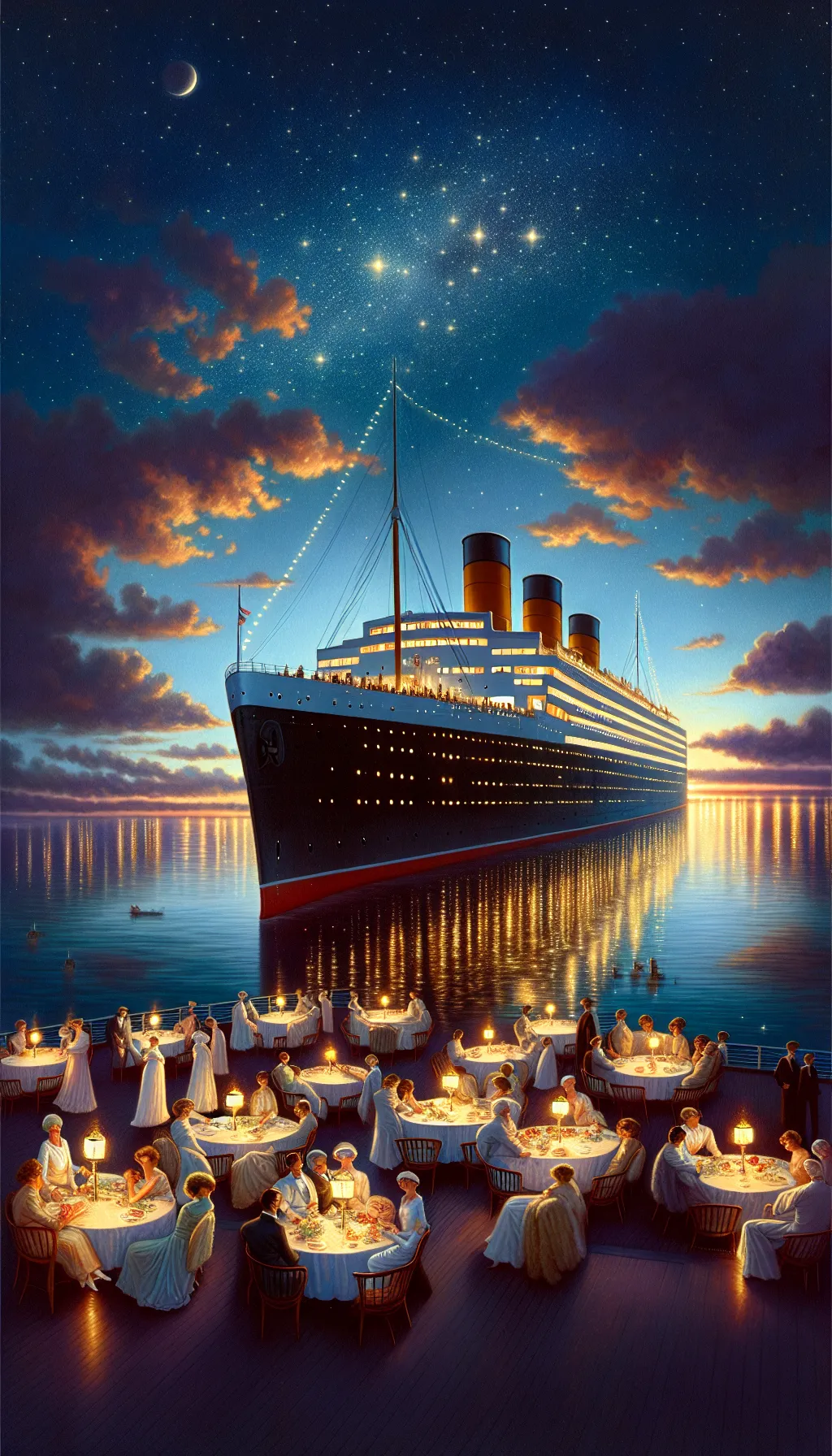United Kingdom – The Night the Titanic Sank – April 14, 1912
TLDR;
- Event: The RMS Titanic struck an iceberg on April 14, 1912, during its maiden voyage from Southampton to New York City, leading to its sinking in the early hours of April 15.
- Casualties: The disaster resulted in the loss of 1,517 lives, highlighting the lack of sufficient lifeboats and emergency preparedness.
- Aftermath: The tragedy prompted the 1914 International Convention for the Safety of Life at Sea (SOLAS), introducing stricter maritime safety regulations.
- Legacy: The sinking of the Titanic serves as a stark reminder of the consequences of overconfidence in technology and the importance of safety measures.
–
–
Story
The icy waters of the North Atlantic lay still under a star-studded sky as the RMS Titanic, the crown jewel of maritime engineering, sliced through the waves. Onboard, passengers reveled in the luxury of the grand ship, unaware that their voyage was about to take a tragic turn.

The Titanic, widely believed to be highly safe, was on its maiden voyage from Southampton to New York City. It was a floating palace, boasting opulent dining rooms, a swimming pool, and even a squash court. The world watched in awe as it embarked on its journey, carrying 2,224 souls, from the wealthiest of society to hopeful immigrants seeking a new life in America.
But as the clock ticked past 11:40 PM on April 14, 1912, disaster struck. A lookout’s frantic bell rang out, and the cry of ‘Iceberg, right ahead!’ echoed through the night. The Titanic’s fate was sealed in those fateful moments. Despite desperate maneuvers, the ship’s starboard side scraped against the iceberg, tearing a series of holes below the waterline.
The turning point came swiftly. Water poured into the ship’s compartments, and the realization dawned that the Titanic was doomed. Panic ensued as lifeboats were lowered, some below capacity due to poor organization, lack of training, and reluctance among passengers to leave the ship. The ship’s band played on, though the exact final song remains a subject of debate among survivors.
In the early hours of April 15, the Titanic slipped beneath the waves, taking with it 1,517 lives. The tragedy sent shockwaves around the world, leading to the 1914 International Convention for the Safety of Life at Sea (SOLAS), which mandated sufficient lifeboats, 24-hour radio monitoring, and improved safety procedures.
The sinking of the Titanic remains a poignant reminder of human hubris and the fragility of life. It is a story of heroism and heartbreak, of lessons learned at a terrible cost.
–
| Would a different course of action have changed the fate of the Titanic? |